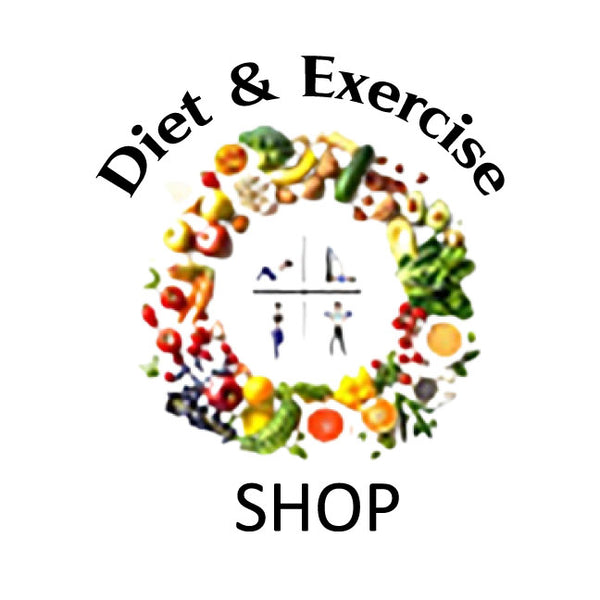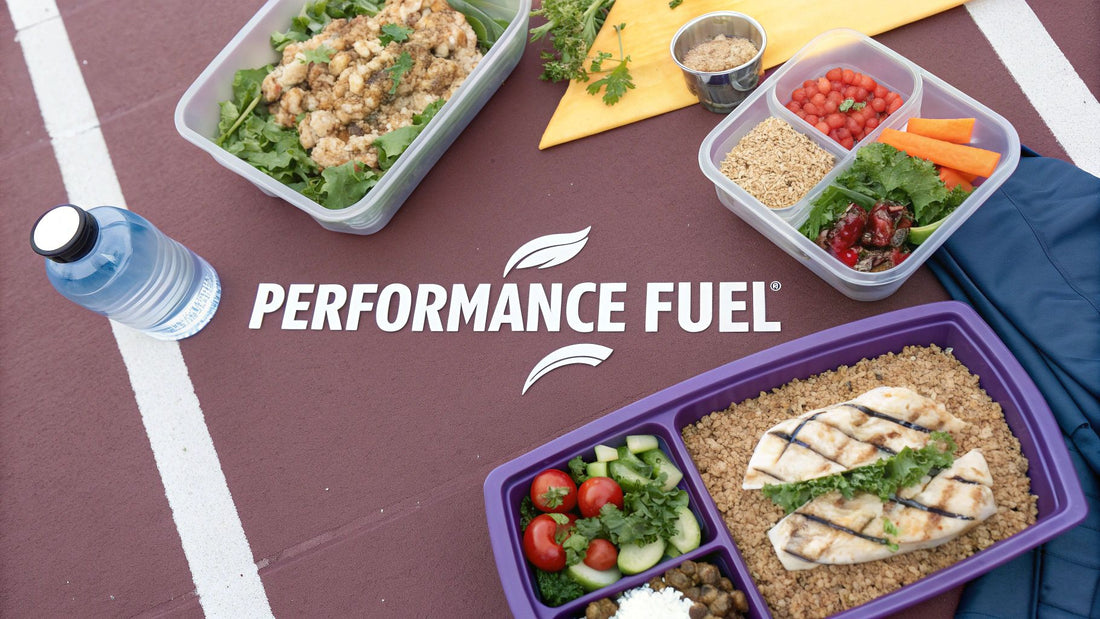
A Healthy Diet Plan for Athletes That Actually Works
Forget what you've heard about training being the only key to unlocking your potential. The truth is, the food on your plate is just as powerful as the hours you spend in the gym or on the track.
What you eat—or don't eat—directly impacts your energy, recovery, and overall performance.
Elite athletes get this. They've moved past the old-school mentality of just "eating more" and have embraced a smarter, science-backed approach to fueling. It’s about strategically giving your body exactly what it needs to handle the intense demands of your sport.
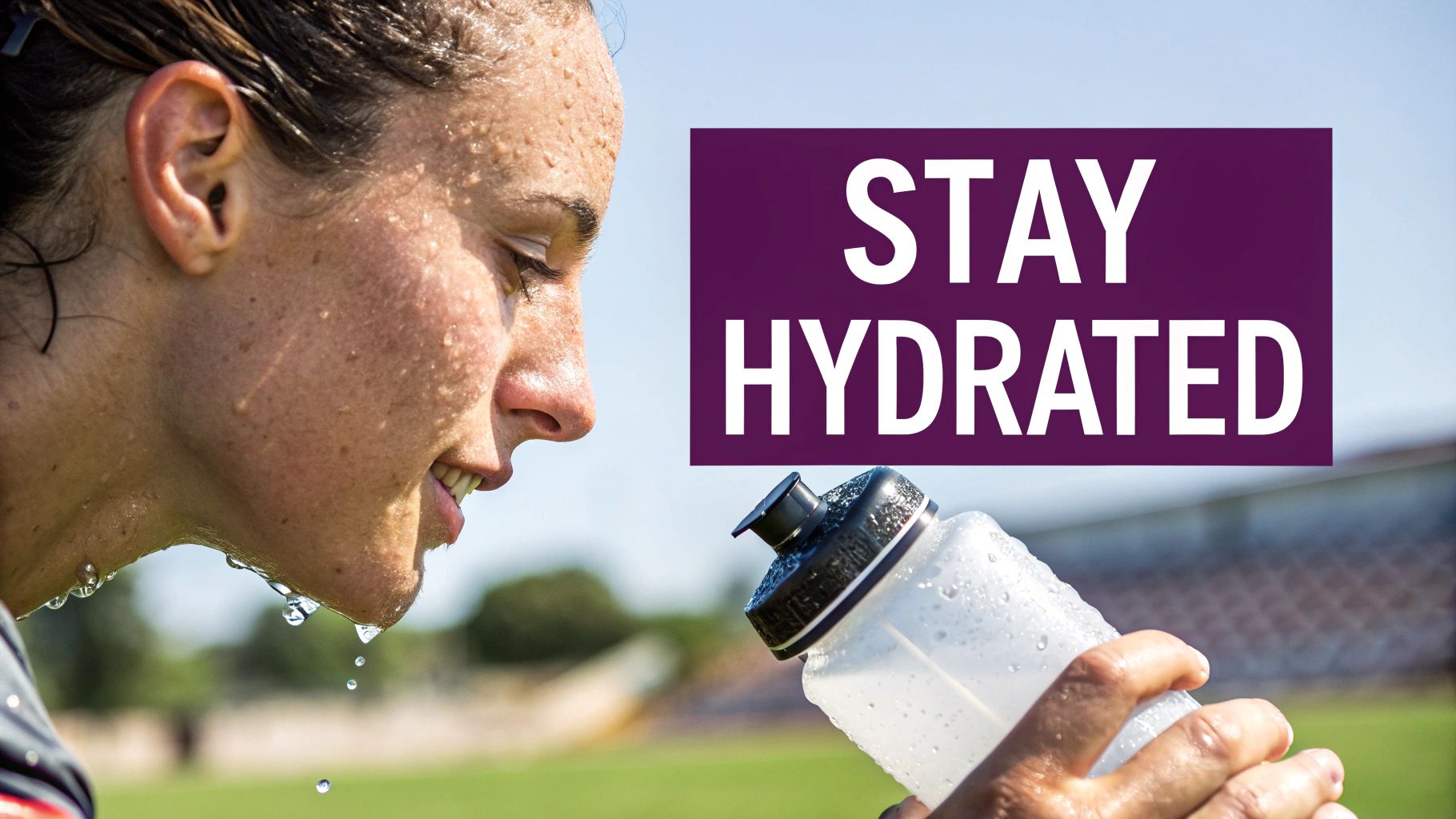
This isn't just a niche interest, either. The focus on performance nutrition has exploded into a massive global movement.
In fact, the sports nutrition market was valued at an incredible USD 58.72 billion in 2024 and is expected to hit USD 104.65 billion by 2033.
That huge growth tells you one thing: athletes and fitness enthusiasts everywhere are realizing that optimized nutrition is non-negotiable for hitting their goals. You can dig deeper into the sports nutrition market's growth on Fortune Business Insights.
The Core Principles of Athlete Nutrition
Before we can build a solid plan, we need to get the fundamentals right. Think of these as the non-negotiable building blocks for a body that’s primed to perform.
A winning strategy isn't about jumping on the latest diet trend; it’s about consistently providing your body with the high-quality fuel it needs to work hard and bounce back stronger.
The three core pillars of any effective athlete's diet are:
- Macronutrients: These are your main energy drivers. We're talking carbohydrates for immediate fuel, protein for repairing and building muscle, and healthy fats for sustained energy and vital hormone production.
- Micronutrients: Don't sleep on the little guys. Vitamins and minerals are involved in thousands of bodily processes, from turning food into energy and carrying oxygen to keeping your bones strong and your immune system firing.
- Nutrient Timing: This is the when and what of eating. Consuming the right nutrients at the right time around your workouts can be a game-changer for your energy levels and how quickly you recover.
Let's break these down into a quick reference guide.
Athlete's Nutritional Pillars at a Glance
This table gives you a snapshot of the essential components we'll be building your diet around. Think of it as your cheat sheet for fueling success.
| Nutritional Pillar | Primary Role for Athletes | Key Food Sources |
|---|---|---|
| Carbohydrates | Main energy source; fuels high-intensity efforts and replenishes glycogen stores. | Oats, brown rice, quinoa, sweet potatoes, whole-wheat bread, fruits. |
| Protein | Essential for muscle repair, growth, and recovery after training. | Chicken breast, fish, lean beef, eggs, Greek yogurt, tofu, lentils. |
| Fats | Provides long-term energy, supports hormone function, and absorbs vitamins. | Avocado, nuts, seeds, olive oil, fatty fish (like salmon). |
| Micronutrients | Crucial for energy production, bone health, immune function, and fluid balance. | Leafy greens, colorful vegetables, fruits, nuts, dairy products. |
| Hydration | Regulates body temperature, transports nutrients, and prevents performance dips. | Water, electrolyte drinks, fruits and vegetables with high water content. |
Mastering these pillars is the key to unlocking consistent, high-level performance.
"Food is your greatest ally in performance. What you eat before, during, and after training dictates your energy levels, your recovery speed, and ultimately, your results."
This guide will give you a clear, actionable framework to build a plan that works for you. By focusing on these principles, you can stop guessing and start fueling your body with purpose.
And if you're looking for a little extra motivation along the way, our collection of athletic-themed shirts and mugs at DietExerciseShop can help keep your goals top of mind.
Figuring Out Your Personal Fuel Needs
A one-size-fits-all diet plan just doesn't work for serious athletes. Your body's demands are unique, shaped by your sport, how hard you train, and your own metabolism.
If you really want to dial in your performance, you have to get specific and calculate what your body actually needs.
It all starts with your daily calorie target. Think of calories as the pure energy your body needs to live, breathe, train, and recover. Nailing this number is the first and most important step in building a smart nutrition plan.
Finding Your Daily Calorie Target
The total energy you burn each day comes down to two things: your Basal Metabolic Rate (BMR)—what you burn just by being alive—and how active you are.
There's a pretty simple and effective way to get a good estimate without getting lost in complex formulas. Just use your body weight.
- Light Training or Rest Days: Your body weight (in lbs) x 16-18
- Moderate Training (3-5 days/week): Your body weight (in lbs) x 18-20
- Intense Training (5-7 days/week): Your body weight (in lbs) x 20-22
Let's say you're a 150-pound athlete who trains hard most days. You'd be looking at roughly 3,000 to 3,300 calories a day just to maintain your weight and have enough fuel in the tank.
If you're trying to shed some weight, you'll need to create a small, manageable deficit from this number. It's a bit of a balancing act, and you can get a better handle on the concept by understanding what a calorie deficit is and how it works for athletes.
Setting Your Macronutrient Split
Once you know your daily calorie goal, the next question is where those calories should come from. We're talking about the "macro split"—the ratio of carbohydrates, proteins, and fats in your diet. This is where your specific sport really comes into play.
The plate of an endurance runner should look completely different from a powerlifter's. That runner needs a steady supply of carbs for fuel, while the powerlifter needs a ton of protein to repair and build muscle.
This image really drives home how your macro needs shift based on what you're training for, whether it's endurance, pure strength, or a mix of both.
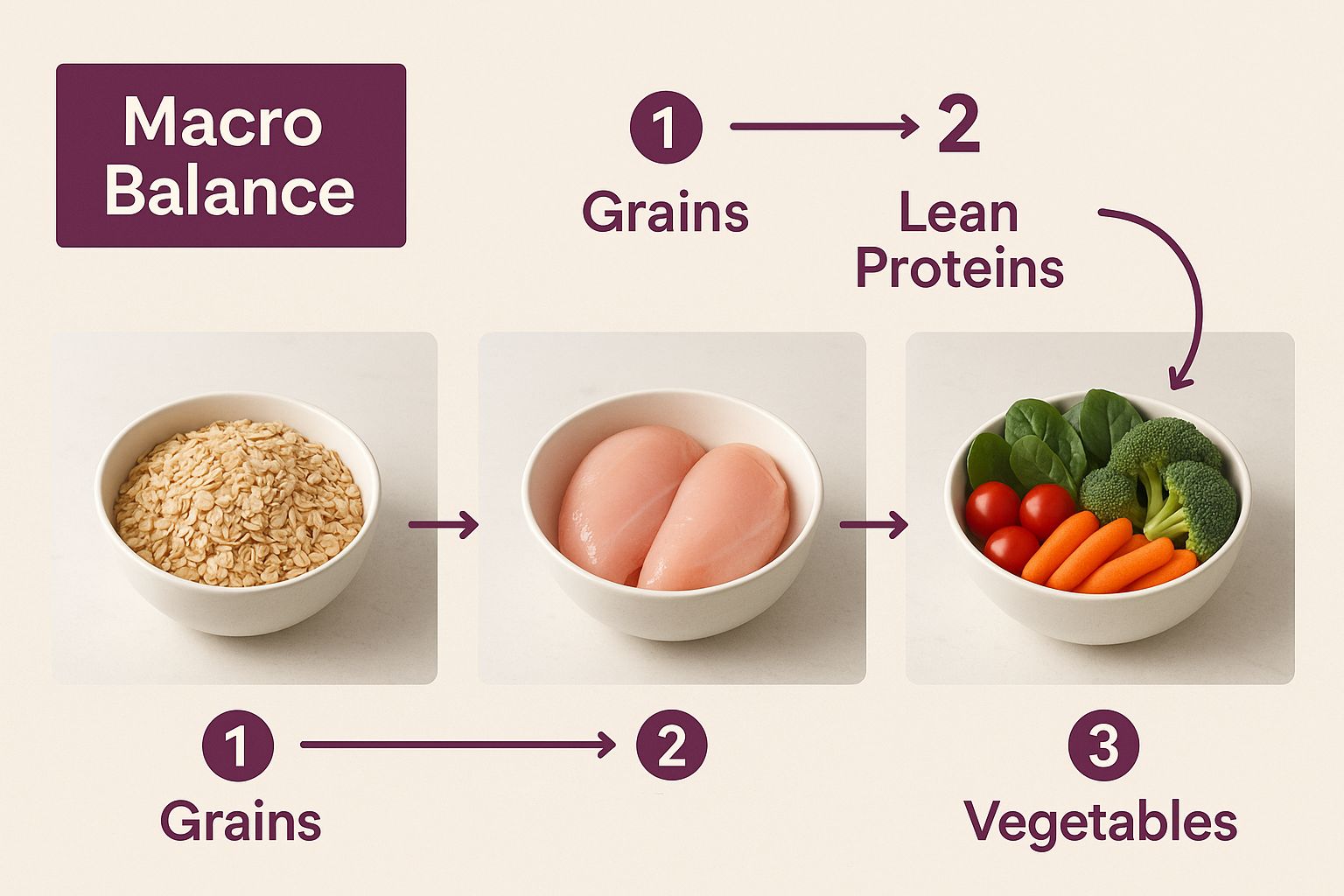
As you can see, your main energy source changes depending on the demands of your sport. So, how do we turn those percentages into real food on your plate?
From Percentages to Daily Grams
Now it's time for some simple math. Converting your macro percentages into actual grams is easy once you know your calorie goal and your ideal split.
Just keep these numbers in mind:
- Carbohydrates: 4 calories per gram
- Protein: 4 calories per gram
- Fat: 9 calories per gram
Let’s run through a quick example. Picture a 180-pound soccer player—a classic "hybrid" athlete—who trains intensely and needs around 3,600 calories a day. A solid macro split for them would be something like 50% carbs, 25% protein, and 25% fat.
- Carbs: 3,600 calories x 0.50 = 1,800 calories. Now divide by 4 calories/gram = 450g of carbs.
- Protein: 3,600 calories x 0.25 = 900 calories. Divide that by 4 calories/gram = 225g of protein.
- Fat: 3,600 calories x 0.25 = 900 calories. And divide that by 9 calories/gram = 100g of fat.
Just like that, you've got a concrete, personalized set of targets for your daily meals. This simple process takes the guesswork out of nutrition and gives you a practical roadmap to follow.
Choosing Foods That Build and Fuel
Okay, you've got your calorie and macro numbers dialed in. Now comes the fun part: choosing the actual food.
This is where we move from theory to practice, turning those numbers into meals that build, repair, and fuel your body.
Think of it this way: your macros are the blueprint for your performance machine, but the food you choose is the high-grade material you build it with. It's the difference between a diet that just gets you by and an elite fueling strategy that pushes you to the next level.
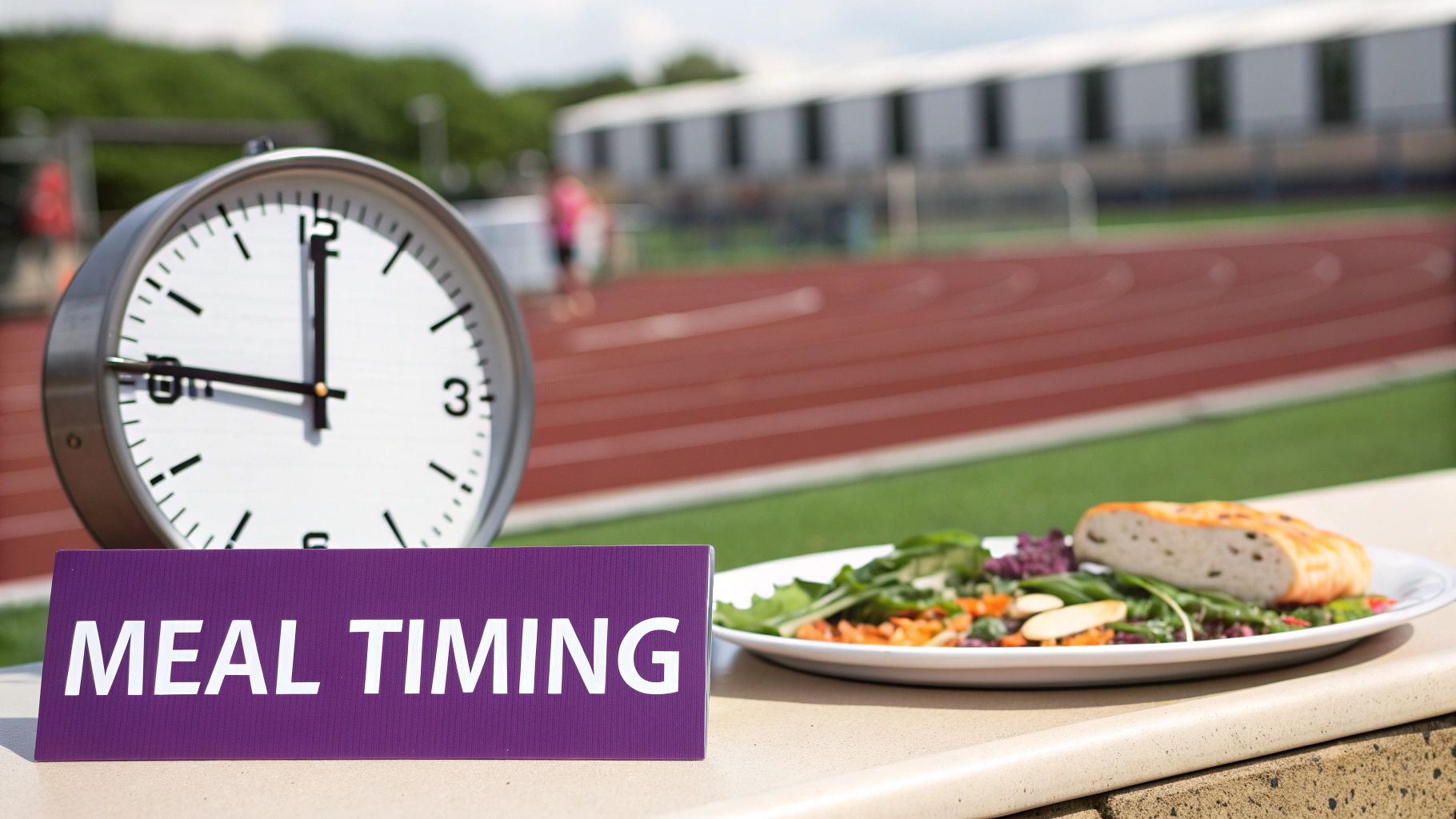
Every calorie should have a purpose. Let’s break down what that looks like for each macronutrient.
Fueling with Smart Carbohydrates
Carbs are your body's go-to energy source, but not all carbs are created equal. The trick is to match the type of carb to what you're doing.
For the long haul—powering through a tough training session or just getting through a busy day—you need complex carbohydrates. These guys digest slowly, giving you a steady drip of energy instead of a quick spike and crash.
- Go-to sources: Oats, brown rice, quinoa, sweet potatoes, and whole-wheat pasta.
On the flip side, you have simple carbohydrates. They digest fast, delivering a quick hit of energy. This makes them perfect right before a workout for an immediate boost or during a long race to keep your tank from hitting empty.
- Go-to sources: Fruits like bananas and grapes, a bit of honey, or sports drinks.
Building with High-Quality Protein
Protein is your body's repair crew. When you train, you create tiny tears in your muscle fibers. Protein provides the amino acids—the building blocks—to patch them up and make them stronger than before.
This is why getting enough high-quality, complete protein is non-negotiable.
I see so many athletes get hung up on just the amount of protein they eat. But the quality—making sure you're getting all the essential amino acids—is just as important for real recovery and muscle growth.
Whether you're an omnivore or plant-based, variety is your best friend. Mix it up to make sure you're covering all your bases.
- Animal-Based: Chicken breast, lean beef, fish (salmon is a winner for its omega-3s), eggs, and Greek yogurt.
- Plant-Based: Tofu, tempeh, lentils, chickpeas, quinoa, and edamame.
If you struggle to hit your protein goals through food alone, a supplement can be a lifesaver. A good whey or plant-based protein powder is incredibly convenient for a post-workout shake. We've got some solid options you can check out in our DietExerciseShop.
The Power of Micronutrients
Macros get all the glory, but micronutrients—your vitamins and minerals—are the unsung heroes of performance. They're the spark plugs for everything from energy production and immune function to bone health and getting oxygen to your muscles.
You just have to look at the sports nutrition industry to see how critical these are. While proteins and amino acids are huge, things like B12, Iron, Vitamin D, and Calcium are staples for their role in metabolism and recovery.
And let's not forget carbs, which are projected to make up 26% of the market by 2025—a clear sign of their primary role as fuel. You can dive deeper into the sports nutrition market trends at IMARC Group.
Here are a few key players you absolutely need to pay attention to:
- Iron: This is non-negotiable for carrying oxygen to your working muscles. You can find it in lean red meat, spinach, and lentils.
- Calcium: It's not just for bones; calcium is also vital for muscle contractions. Load up on dairy, fortified plant milks, and leafy greens.
- Vitamin D: This vitamin works hand-in-hand with calcium to keep your bones strong and also gives your immune system a boost. Get it from fatty fish, fortified foods, and a bit of sunshine.
Mastering Your Meal and Hydration Timing
Any seasoned athlete will tell you a crucial secret: when you eat is just as important as what you eat.
Getting your nutrient timing right is like putting high-octane fuel in a race car right before the green light. It's the key to maximizing your energy, avoiding that dreaded wall, and kickstarting recovery the second you're done.

This strategic approach to eating around your training makes sure your muscles have the exact fuel they need, right when they need it most. A solid diet plan is incomplete without this piece of the puzzle. Let’s break down the three key windows for fueling your performance.
The Pre-Workout Fueling Window
Think of your pre-workout meal as topping off your energy stores. The main goal here is to get in some easily digestible carbohydrates that provide a steady stream of fuel without sitting heavy in your stomach.
The timing really matters. The closer you get to your workout, the simpler those carbs should be.
For instance, a swimmer with a 6 AM practice has a tiny window to work with. A quick banana or a slice of toast with jam about 30 minutes before jumping in the pool is perfect for that fast-acting energy.
On the other hand, a soccer player with a match in the afternoon should have a more substantial meal 2-3 hours beforehand. Something like a chicken and brown rice bowl gives them sustained energy and allows plenty of time for digestion.
Fueling During Your Workout
If your workout is less than an hour, plain old water is usually all you need. But once you start pushing past the 60-90 minute mark, you've got to think about refueling on the go.
During that kind of prolonged activity, your body starts to burn through its stored glycogen. If you don't replenish it, your performance will nosedive.
This is where simple carbs become your best friend. We're talking sports drinks, energy gels, or even easily digestible snacks like pretzels or graham crackers. The goal is to get in about 30-60 grams of carbohydrates per hour to keep your energy levels stable and hold off fatigue.
It’s a small step that can make the difference between finishing strong and fading fast.
The Post-Workout Recovery Window
The moment you stop training, your body switches into recovery mode. This is your most important window to restock those depleted glycogen stores and give your muscles the protein they're screaming for to repair and rebuild.
You'll want to get a meal or snack in within 30-60 minutes after you finish.
"Your post-workout meal is the first step in preparing for your next session. Skipping it is like asking your body to rebuild a house without any bricks."
The ideal recovery meal combines carbohydrates and protein, generally in a 3:1 ratio. Simple, effective options are a lifesaver here:
- A protein shake blended with a banana
- Greek yogurt topped with berries
- Good old-fashioned chocolate milk
For athletes who need a super convenient way to hit their protein targets, our shop has a great selection of high-quality shakers that make post-workout nutrition a breeze. And don't forget about hydration—it’s just as critical for recovery. You can find more practical tips on our DietExercise YouTube channel.
Putting It All Together on Your Plate
Knowing your macros and calorie targets is a great start, but the real magic happens when you translate those numbers into actual food on your plate. This is where theory becomes reality.
Let's walk through what a day of eating can look like, with a couple of solid blueprints you can tweak for your own training.
https://www.youtube.com/watch?v=kbEijDzzjds
The key here is understanding that different sports demand different fueling strategies. A powerlifter’s plate will, and should, look very different from a marathon runner’s.
It's all about matching your nutrition to your specific performance goals.
A Day in the Life: The Strength Athlete
For someone focused on building muscle and power, protein is the star of the show. Here’s a sample 2,800-calorie day built for muscle growth and repair, spreading protein intake evenly to keep muscle protein synthesis firing on all cylinders.
- Breakfast: Kick things off with 4 scrambled eggs loaded with spinach, plus a side of whole-wheat toast topped with avocado for healthy fats.
- Lunch: A large grilled chicken breast (8 oz) paired with a cup of quinoa and some roasted broccoli.
- Pre-Workout Snack: Keep it simple and effective with Greek yogurt and a handful of berries.
- Post-Workout & Dinner: Start recovery immediately with a protein shake. Later, sit down to a dinner of lean ground turkey meatballs served with zucchini noodles and a light marinara sauce.
Nailing your post-workout nutrition is a game-changer for recovery. You can dive deeper into this topic with our guide on the best post-workout recovery foods.
Fueling the Long Haul: The Endurance Athlete
Endurance athletes are carbohydrate machines. This 3,500-calorie plan is designed to keep glycogen stores topped off, providing the sustained energy needed to go the distance.
- Breakfast: A big bowl of oatmeal made with milk is the perfect foundation. Top it with a banana, a sprinkle of nuts, and a drizzle of honey for an extra carb boost.
- Lunch: A classic turkey and cheese sandwich on whole-wheat bread, an apple, and a side of pretzels for some quick-digesting carbs.
- Pre-Workout Snack: Something simple like a granola bar or a handful of dried fruit about an hour before you start.
- Dinner: A solid portion of salmon (6 oz) for protein and omega-3s, alongside a large sweet potato and a fresh side salad.
Don't Overlook Hydration and Electrolytes
Staying hydrated isn't just about chugging water when you feel thirsty—it’s a constant, all-day process. In fact, performance can tank if you lose as little as 2% of your body weight in fluid.
That's when fatigue, cramps, and a drop in focus start to set in.
A great rule of thumb is to drink half your body weight (in pounds) in ounces of water daily. So, a 160-pound athlete should aim for at least 80 ounces, and that’s before you even factor in the fluid you lose during your workout.
When you're really pushing it, especially in the heat, you're sweating out more than just water. You're also losing critical electrolytes like sodium and potassium that keep your muscles firing correctly.
This is a big reason why the sports nutrition market is growing so fast, with fitness participation reaching 40% in Brazil and 35% in China. Globally, 31% of active consumers are using more of these products to support their goals, with sports drinks leading the charge. If you're interested in the market trends, you can discover more insights about the sports nutrition market at Straits Research.
For athletes who are serious about their performance, replacing those lost minerals is non-negotiable. It helps maintain fluid balance and supports proper muscle function. If you need a simple, effective way to stay on top of your game, check out our premium electrolyte supplement.
Common Questions Athletes Ask About Nutrition
Switching to a more structured way of eating always brings up a ton of questions. What happens on a rest day? What about when I'm traveling?
It's the real-world stuff that often trips people up. Let's tackle some of the most common hurdles I see athletes face so you can fine-tune your approach and stay on track.
How Should I Eat on Rest Days?
A rest day isn't a "cheat day." Think of it as a "repair day." Your goal shifts from fueling a workout to rebuilding your body for the next one.
You're not burning through energy at the same rate, so you don't need as many carbs. A good rule of thumb is to drop your carbohydrate intake by about 20-30%.
What you don't want to cut back on is protein. Keep your protein intake high. Your muscles are in full-on repair mode, and they need those amino acids to rebuild stronger.
I always tell my clients to use rest days to double down on nutrient-dense foods—think leafy greens, colorful berries, and healthy fats from avocados or nuts to help fight inflammation. And don't forget to keep chugging water; it's just as important for flushing out waste products.
Rest day nutrition is an investment in tomorrow's performance. You’re not taking a day off from fueling; you're just fueling for a different purpose—repair and recovery.
Are There Any Supplements That Actually Work?
The supplement aisle is a confusing place, but a few key players have stood the test of time and scientific rigor.
Remember, supplements are there to fill specific gaps, not to replace a solid foundation of whole foods.
Here are the ones that consistently deliver results for athletes:
- Protein Powder: It's just so convenient. Hitting high protein targets can be tough, and a post-workout shake is one of the easiest ways to kickstart muscle recovery.
- Creatine Monohydrate: This is probably the most-studied sports supplement on the planet. The research is clear: it helps with strength, power, and building lean muscle.
- Electrolytes: If you're an endurance athlete or just someone who sweats a lot, these are non-negotiable. Replacing the sodium and potassium you lose through sweat is critical for staving off cramps and dehydration.
For a deeper dive on this, the DietExercise YouTube channel has a great video breaking down hydration strategies.
Can I Really Be a High-Performing Vegan Athlete?
Yes, one hundred percent. We're seeing more and more elite athletes thrive on plant-based diets. The trick isn't if you can do it, but how you do it. Meticulous planning is the name of the game.
You have to be smart about getting a complete amino acid profile. This means combining different plant proteins, like pairing lentils with brown rice or having plenty of tofu, quinoa, and beans.
You also need to keep a close eye on a few key micronutrients. For example, always pair your iron sources (like spinach or lentils) with a source of Vitamin C (like bell peppers or citrus) to boost absorption.
And supplementing with Vitamin B12 is essential, as it's nearly impossible to get from plants alone.
What Should My Nutrition Look Like in the Off-Season?
The off-season is your time to heal, both physically and mentally. Your diet needs to reflect that.
Training volume drops, so your calorie needs will, too. The key is to adjust your intake to avoid unwanted weight gain while still giving your body everything it needs to fully recover from the grind of the season.
Bring your focus back to a balanced diet full of whole foods. You can definitely ease up on the carbs since your activity level is lower, but don't slash your protein.
Maintaining a moderate protein intake is crucial for holding on to all that hard-earned muscle. I also see the off-season as a great opportunity to be a bit more flexible with food choices and focus on shoring up any nutritional gaps that might have appeared during competition.
At Diet & Exercise, we know that feeling good in your gear can be a huge motivator. Whether you're in the thick of your season or deep in recovery mode, our collection of athletic-themed apparel is designed to keep you inspired. Check out the full lineup at our Diet & Exercise Shop.
